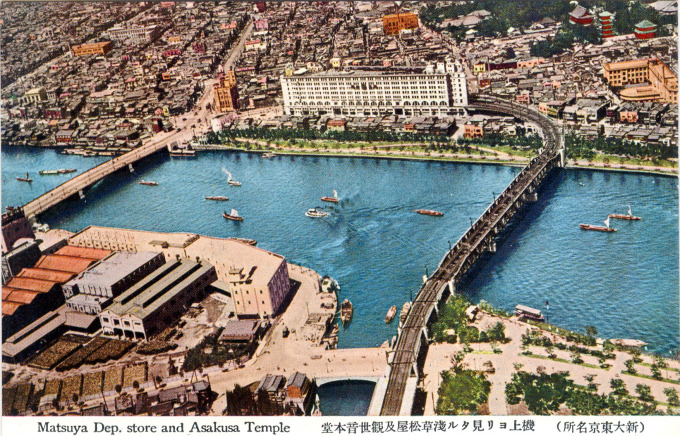
An aerial view of the Asakusa Matsuya department store that also served as the terminus of the Tobu Nikko railway. In the upper right are the Asakusa Kwannon and Five-Story pagoda. At lower left, across the Azuma Bridge spanning the Sumida River, is the Asahi Brewing Co. brewery and headquarters.
Matsuya Asakusa opened in 1931 and was designed to include the Tokyo terminal (Asakusa Kaminarimon Station) of the Tobu Railway, linking Tokyo with Nikko. The dual-purposing concept was considered radical at the time. Decades later, “sub-center” rail station development, including Shibuya, Shinjuku, Meguro, and Ikebukuro, incorporated department stores as part of the stations’ over-all designs making access to the national railroad system — and shopping — easy for thousands of passengers commuting to the city from the suburbs via private railroads.
Matsuya Asakusa was also built with a roof-top amusement park – Playland – that became a model for other rooftop amusement parks in Japan. Among the amusements provided was a gondola ride that ran the length of the building, and a pet zoo. Playland opened in 1931 and closed in 2010.
- Aerial view of Matsuya Asakusa and the Asahi Brewing Co., c. 1940. The Tobu railway bridge is at left.
- River view of the Asakusa Matsuya department store, including the roof-top sky ride that was part of Playland amusement park, opened in 1931.
- Tobu Nikko Railway, c. 1930, with the Asakusa branch of Matsuya department store in the distance.
- Looking across the Sumida River at Tobu Azumabashi and Matsuya Asakusa, c. 1930.
The Tobu Railway was formed in 1891, initially operating routes from Kita-Senju to Kuki (1899), and in Tokyo Sumida Ward from Hikifune to the gardens at Kameido and Horikiri (1902). The Nikko Line opened in 1929 with its Tokyo terminal on the east bank of the Sumida at the site of the present-day Tokyo Skytree, until a railway bridge across the river – Tobu Azumabashi – was completed in 1931.


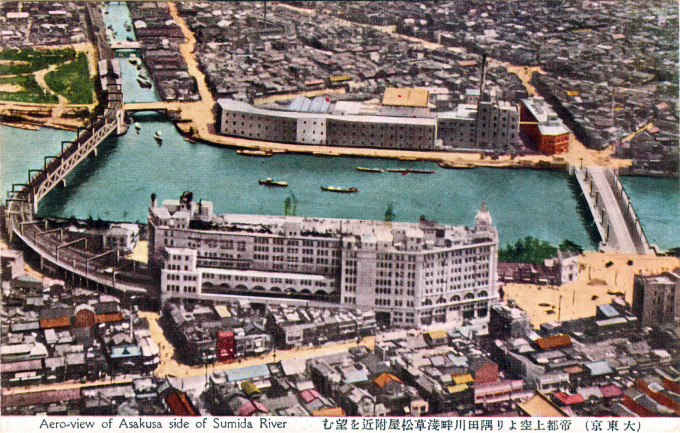
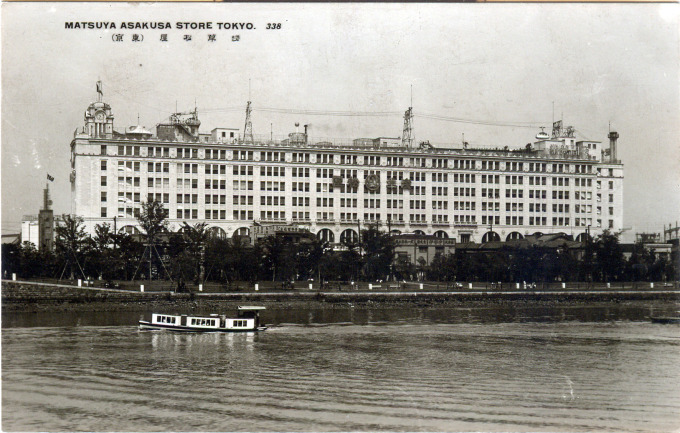
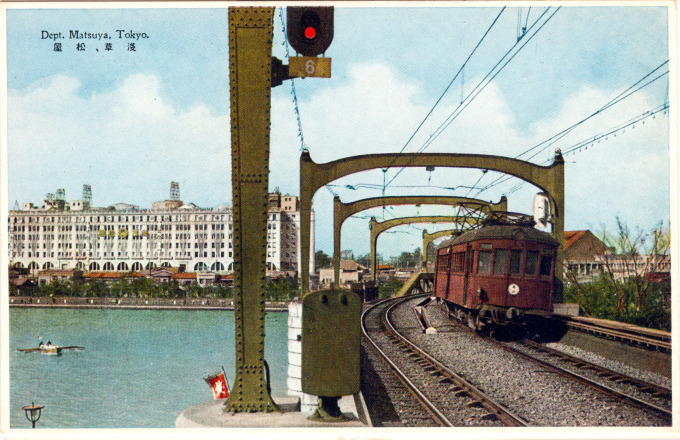
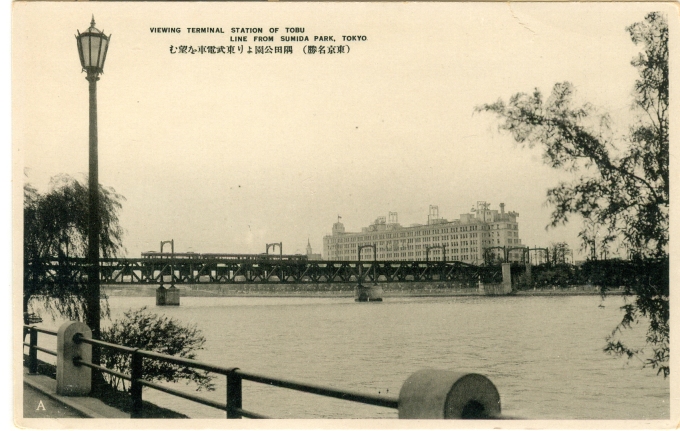
Pingback: Matsuya Department Store, Ginza. | Old Tokyo
Pingback: Nezu Kaichiro, Chairman of the Tobu Railway, c. 1920. | Old Tokyo